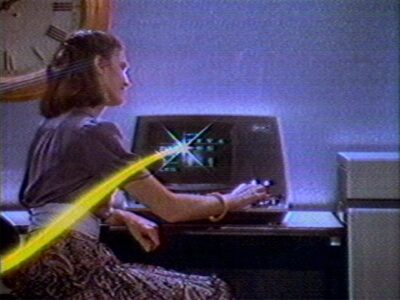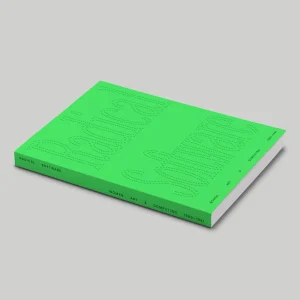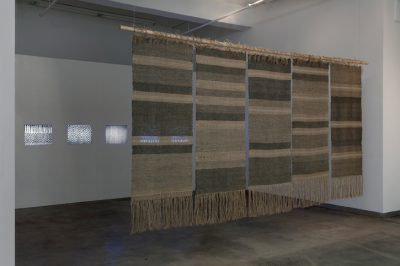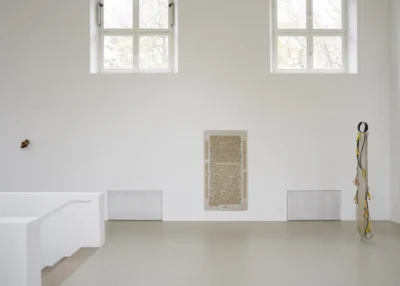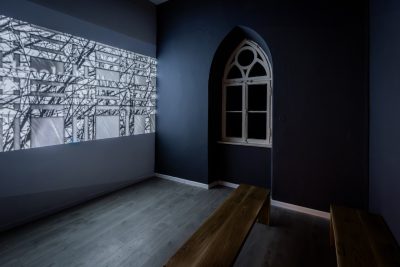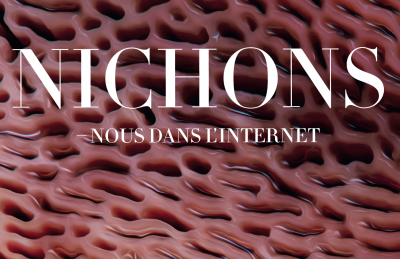bitforms gallery is pleased to present Rethinking Threads, Beryl Korot’s third solo exhibition with the gallery. Recognized as a seminal video artist, Korot’s work is celebrated for her application of loom-based programming to the programming of multiple video channels. This structure has allowed her to bring the ancient and modern worlds of technology into conversation as previously exemplified in her multidisciplinary video, drawing, and weaving work Text and Commentary (1976). Rethinking Threads marks Korot’s return to the physical act of weaving last practiced with her handwoven and coded canvases of the 1980s. Here, she prints her own threads constructed without fiber, binding linen tape with taut paper warp threads to replace her loom.

bitforms gallery is pleased to present Rethinking Threads, Beryl Korot’s third solo exhibition with the gallery. Recognized as a seminal video artist, Korot’s work is celebrated for her application of loom-based programming to the programming of multiple video channels. This structure has allowed her to bring the ancient and modern worlds of technology into conversation as previously exemplified in her multidisciplinary video, drawing, and weaving work Text and Commentary (1976). Rethinking Threads marks Korot’s return to the physical act of weaving last practiced with her handwoven and coded canvases of the 1980s. Here, she prints her own threads constructed without fiber, binding linen tape with taut paper warp threads to replace her loom.
In the early 1970s, Korot referenced the loom as the earliest computer as a result of development in 1804 of the Jacquard loom which used punch cards to program patterns. Rethinking Threads traces the evolution of Korot’s connection to technology, specifically her consideration of weaving as an early communications tool. Exhibited works draw upon techniques used in painting, printing, and writing, suggesting an interdisciplinary nature beyond the art and craft divide. The artist’s thread design process begins with the identification of source material. Once the elements of each thread are conceived, Korot maps their patterns. Each composition is printed, cut, then woven. In standard loom production, the entire structure of the work is considered before completion. In these works, however, Korot inserts individual threads over the gridded surface.This technique allows her to build up the surface of the weavings at any time, thread over thread, like a painter applying more paint. Flexibility as well as portability are important aspects of Korot’s practice, stemming from her early involvement in video art with the advent of the battery-powered Sony Portapak. Larger weavings within this exhibition are assembled as a unified whole from six, smaller panels with the introduction of a suture thread that binds the works together. This approach allowed the artist to travel with her work and weave wherever she was, releasing her practice from the boundaries of the studio.
Rethinking Threads mediates the artist’s return to previous bodies of work as source material, such as Babel: The Seven Minute Scroll (2007), while also introducing new inspirations rooted in the lineage of painting. Korot unifies components of the hand drawn, handmade, and programmed. Judah’s Cuff (after Zurbarán) #2 is a dynamic jewel-tone tapestry. Its surface is flecked with glowing yellow dispersed on a vibrant field of red, a hue Korot transformed from its original source into a richer, more saturated tone. An exhibition of Francisco de Zurbarán’s (1598–1664) series Jacob and His Twelve Sons (1640–45) greatly inspired this work, urging Korot to examine the opulence within his painted textiles. Canvas itself is a woven material, but the differences between painting and weaving have been greatly gendered throughout art history. Here, Korot reverses this dichotomy, repurposing Golden Age paintings as a material for her own weavings. Details within the series, such as Judah’s cuffs and Jacob’s turban, become data embedded in thread.
The small Babel weavings exemplify the dialogue between the phonetic, pictographic, and coded language Korot explored in Babel: The 7 Minute Scroll (2007). The text itself recounts the Babel story which describes an ancient world where a human-centered worldview develops in opposition to a god-centered one. Worker, Take a Letter, and At the Bend in the River play with the asymmetry of Korot’s threads. Their diverse strands of varying width manifest patterns beyond the grid composition itself. The artist references these instances as artifacts of irregularity. Warp & Weft, the drawing series on view, are titled as a reference to the basic vertical and horizontal structure of woven fabric.
